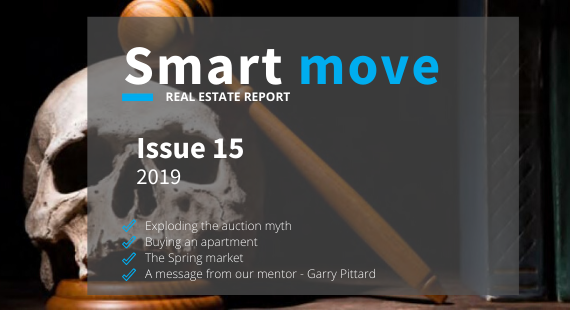The Smart Art of Rentvesting

Nothing going on but the rent? Then you need to think seriously about rentvesting.
In Sydney’s property market, for many people, purchasing a family home in a suburb that ticks all the boxes in relation to work and lifestyle choices isn’t an economic reality.
But – if this sounds like you – it doesn’t mean you have to miss out on homeownership. This is where the concept of rentvesting comes in, as it combines all the financial benefits of home ownership, with all of the advantages of getting to live in your chosen suburb, regardless of your economic restraints.
So what is rentvesting?
Simply put, it’s buying a rental property in a suburb you can afford, getting your foot on the property ladder, while you continue to rent in your chosen neighbourhood. You reap the rewards of investing in property while remaining in your neighbourhood of choice.
Your purchase property may not even be in Sydney – it might be beneficial for you to buy a home to rent in a more rural NSW town, or even interstate. But don’t just buy anywhere willy-nilly – you probably need to engage a strategic buyer’s agent, who specialises in investment purchases, or a property investment strategist to ensure you make a smart choice. Remember, this is no emotional purchase – your investment needs to work hard for you, to allow you to buy your own home in the future.
Benefits of reinvesting:
- For young people, rentvesting is a great way of getting into the market sooner and start building wealth from an early age. Over time, the equity built can make it much easier for you to purchase again in the future – whether it’s a second investment property, or your own home.
- It means you can live in the suburb you want to, instead of where you can afford, so you don’t have to compromise your lifestyle to buy property.
- Buying property in a more affordable area that still produces a healthy rental yield means you will have little out-of-pocket expenses.
- You won’t have to stretch yourself financially with a huge mortgage.
- Your property is working for you to build a nest-egg from the capital growth – obviously you will have capital gains tax to pay, so get yourself a good accountant to help minimise your tax. Your accountant will also be able to advise you on the tax benefits of being a landlord, such as negative gearing and depreciation.
- You own a property while maintaining the flexibility of not being stuck in one suburb – free to move for jobs/schools etc.
Negatives of reinvesting:
- Where you live is not your property. You can’t just redecorate or knock in a picture hook at will.
- You are part of the fickle rental market; if your landlord decides to sell, you have to move.
- You take on the responsibilities of a landlord, though this can be mitigated by using a good property management agent.

What to consider:
The most important thing is to buy smartly, so back to enlisting some professional help. Especially when buying in an area you know nothing about. Outlying suburbs need to have good road and public transport links, as it’s likely your tenants will be commuting.
Areas with large corporate HQs outside of the city make smart investment suburbs, as these companies obviously employ a lot of people. They also frequently have staff on secondment from other states or countries and a whole department dedicated to renting property for these employees. Once you have a corporate tenant, the company will likely keep feeding you replacement tenants as their employees move on. Also look for areas with good schools, local amenities, such as shopping, sporting, leisure, and entertainment venues.
Your property specialist will have access to data that will help you narrow down the best areas for you to buy. Just make sure when you appoint an agent that they are truly independent and not simply a salesperson for a group of developers. Some agents specialise in rentvesting and some specialise in a particular area, so doing your due diligence and shopping around for the right professional may be your most important decision.
Look for areas that have a good proportion of owner-occupied properties. When the time comes to sell, you don’t want to be restricted to a market of property investors, who are more ruthless in their buying criteria and will never pay over the odds. If your property appeals to families or first-time buyers, you have a better chance of maximising your return on investment.
Avoid buying new apartments off-plan. While they may seem tempting, there are a lot of unknowns, and if the market and/or lending criteria changes during the build phase, you might find yourself unable to make the final purchase and lose your deposit.
Also, try to avoid the glamorous new builds with swimming pools, gyms, lifts, etc. While they look enticing and may be attractive to tenants, remember you are the ones who will be paying the hefty strata fees, which will impact your financial returns.
These buildings can be quite vast and inevitably filled with rentals and holiday rentals, so though they do attract tenants, you have a lot of competition, which will ultimately drive the rental prices down for the building. As always, even within the building, location plays a huge part too. Properties on the lower and higher levels, near the lifts, and on the corners will always be more popular, so if you could only afford a mid-floor, mid-corridor apartment, it will be less easy to rent – and of course, to sell when the time comes.
As with any property purchase, it’s important to assess your individual circumstances and needs prior to becoming a rentvestor. If planned and executed correctly, rentvesting is a great option to consider as a way of entering an otherwise impenetrable property market.
For more information on property investment check out these two articles…
https://whitehaus-realestate.com.au/2022/07/real-estate-report-accepting-the-right-sale-offer/
(scroll down the page to the article “Yield – Gross v Net – What is the Real Rate of Return?”)



